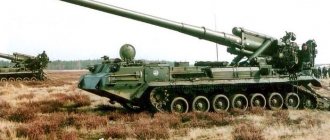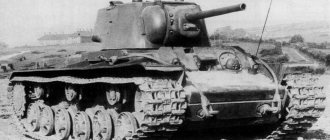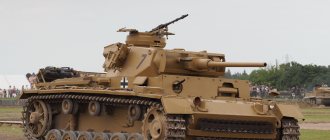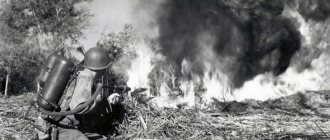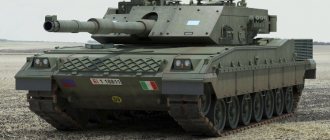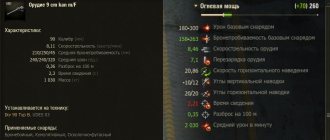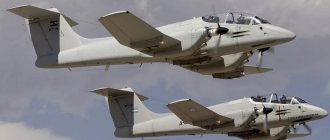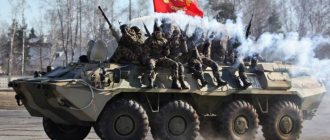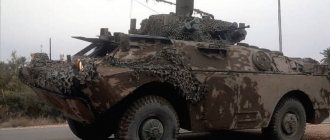Combat vehicles based on BMD-3 (Part 1) BMD-4
Over the years, R&D work was started to create a number of combat and special vehicles based on the BMD-3, but for various reasons, most of them stopped at the stages of preparing working design documentation and manufacturing prototypes for preliminary tests.
Among the vehicles on the BMD-3 chassis put into mass production, we can mention the BMD-4 airborne combat vehicle, the 125-mm 2S25 Sprut-SD self-propelled anti-tank gun and the RKhM-5 reconnaissance chemical vehicle. The development of the BTR-MD amphibious multi-purpose armored personnel carrier has also been completed.
Komandirskaya BMD-ZK
Preliminary tests of the Bakhcha-K command modification took place in 1993, state tests in 1994, and in 1996 it was put into service under the designation BMD-ZK. The combat crew of the BMD-ZK has been reduced to five people, and radio stations and navigation equipment have been additionally installed on the vehicle. However, the BMD-ZK was not mass-produced.
BMD-4
Even at the stage of forming the appearance of a family of combat and special vehicles for the Airborne Forces based on the “airborne combat vehicle of the 90s,” the designers proactively proposed to include in it “an airborne combat vehicle with increased characteristics in terms of armament and protection.” The complex of its main weapons would be similar to the BMP-3 being developed at the same time (100 mm gun, 30 mm automatic cannon and 7.62 mm machine gun in a single unit in a double turret) with a combat weight of 14-15 tons. It was assumed to carry out a promising BMD on a six- or seven-roller chassis, depending on the planned capacity. The project was never implemented, but the issue of strengthening the armament of the BMD and its unification with the armament of the serial BMP-3 was returned to in the second half of the 1990s.
The BMD-4 is equipped with a single BO “Bakhcha-U” produced by KBP
This time the talk was about a significant modernization of the BMD-3, retaining the five-wheel chassis and installing a two-seat fighting compartment with an armament system similar to the BMP-3. The new combat compartment (combat module) was developed at the Tula Instrument Design Bureau (KBP) as part of the BMP-3 modernization program. The design and development work for an airborne combat vehicle with a new unified fighting compartment received the code “Bakhcha-U” (which is often referred to as the fighting compartment). KBP turned out to be the leading enterprise in this R&D. The co-executor for the chassis was, naturally, VgTZ, where work was carried out under the leadership of chief designer V.V. Khanakina. Joint work by KBP and VgTZ on this vehicle began in 1997. An experimental fighting compartment was manufactured by KBP and Tulamashzavod in 2001 and was tested on the BMD-3 chassis.
The new airborne combat vehicle was accepted into service on December 31, 2004 under the designation BMD-4. In May 2005, in Tula, on the territory of the State Unitary Enterprise “KBP”, its General Designer A.G. Shipunov solemnly handed over to the commander of the Airborne Forces, Colonel General A.P. Kolmakov received four BMD-4s, and in August of the same year the 137th Separate Parachute Regiment (Ryazan) received new vehicles. It was planned to organize serial production of the BMD-4 with the manufacture of new chassis at VgTZ and the gradual modernization of previously produced BMD-3s to the level of the BMD-4 during a major overhaul.
One of the first airborne combat vehicles BMD-4 (“Object 960”). The embrasure of the automatic grenade launcher in the frontal plate of the hull has not yet been plugged
BMD-4 afloat
BMD-4 airborne combat vehicles. The built-in weapon installation and combined sights of the gunner and commander are clearly visible
Of course, there were some “frictions”. Against the backdrop of generally positive reviews from the Airborne Forces command, there were complaints about the BMD-4 exceeding the weight limit of 13.2 tons, which had previously been agreed upon with great difficulty for the BMD-3 (although such a radical increase in armament could have resulted in a much greater increase in weight). Intensive use of the first three BMD-4s in the 137th regiment revealed a number of problems. In particular, complaints were made about the “docking of the turret and the chassis” - mainly about the compatibility of the electrical equipment of the vehicle body and the fighting compartment, about the narrow temperature range of the limit switches, etc. The workmanship of some parts caused criticism, which required modifications. If the paratrooper officers who operated the first BMD-4 even joked that “one more place needs to be provided in the vehicle - for a representative of the plant” (and representatives of KBP and VgTZ were always in the unit during trial operation), then for the next production vehicles the parties were already treated much better. From Ryazan, the BMD-4 was transferred to the 76th Air Assault Division (Pskov).
The BMD-4 retained the chassis and general layout of the basic BMD-3. In the control compartment along the axis of the vehicle there is a driver, to the right and left of him there are two paratroopers, as well as two universal seats, on which the commander and gunner are placed during landing. Behind the control compartment is the combat compartment with the main weapons and two crew members located in a rotating turret. Behind the turret there is a troop compartment with three places for paratroopers to board and disembark through the aft landing hatch. The engine-transmission compartment (MTO) occupies the rear part of the body.
The turret houses a 100-mm 2A70 gun-launcher in a single block, to the right of it is a 30-mm 2A72 automatic cannon, and to the left is a 7.62-mm PKT or PKTM machine gun. The KBP designers managed to make the built-in installation of different-caliber weapons quite compact; the weapon block has a length of 3943 mm, a trunnion width of 655 mm, and a weight of 583 kg. The vertical pointing angles of the weapon block are from -6 to +60°.
The 2A70 is a rifled 100-mm low-ballistic gun with a vertical wedge breech, capable of launching an anti-tank guided missile (ATGM) through the barrel, equipped with a single automatic loader for high-explosive fragmentation shells and ATGMs. The machine gun delivers rounds from storage areas to the loading plane of the launcher gun, sends them into the chamber, and removes the spent cartridge case outside the fighting compartment. Accordingly, the automatic loader includes a conveyor, mechanisms for loading, loading and opening the cartridge ejection hatch. The conveyor frame, in which the shots are placed in trays, is located under the floor of the fighting compartment and can rotate relative to the latter using an electromechanical or manual (emergency) drive. The automatic loader reduces gas pollution inside the vehicle and ensures loading of the gun within 4-6 seconds.
The ATGM, together with the gun and control equipment, constitutes a complex of guided weapons. It can include ZUBK23-3 rounds with 9M117M1 ATGM or ZUBK10-3 rounds with 9M117 ATGM. The control system of both ATGMs is semi-automatic using a laser beam. The 9M117M1 Arkan ATGM with an armor penetration of 750 mm and overcoming dynamic protection allows it to hit modern main battle tanks at ranges of up to 5500 m, including the M1A1 Abrams, Leopard-2, etc. (the armor penetration of the 9M117 ATGM warhead is 550 mm without support overcoming remote sensing, maximum firing range - 4000 m). The gun's ammunition includes 100-mm rounds with high-explosive fragmentation shells: 3UOF19 with a 3OF70 projectile and 3UOF17 with a 3OF32 projectile. The optimized shape of the projectile, some lightening of it with an increase in the propellant charge in the ZUOF19 shot, made it possible to fire at a range of up to 7000 m versus 4000 m with the ZUOF17, while the power of the ZOF70 projectile of the ZUOF19 shot was increased due to a higher filling coefficient, and the accuracy of fire was also improved.
The 2A72 automatic cannon has a double-sided belt feed with automated and manual feed switching. The ammunition includes ZUBR6 cartridges with armor-piercing tracer, ZUBR8 with armor-piercing sub-caliber and ZUOF8 with high-explosive fragmentation incendiary shells. The firing range of the 30-mm cannon is up to 4000 m with high-explosive fragmentation shells and up to 2500 m with armor-piercing sub-caliber shells. Used links of cannon and machine gun belts and spent machine gun casings are taken inside the fighting compartment. The weapon complex is designed to defeat not only ground (main battle tanks, armored vehicles, manpower openly and in shelters, fire installations, ATGM launchers, etc.), but also low-flying enemy air targets (the ability to destroy helicopters with fire from a 30-mm cannon or ATGM ).
The mechanized ammunition rack consists of 34 unitary 100-mm rounds (including four ATGM rounds), 350 rounds for a 30-mm automatic cannon and 2,000 7.62-mm rounds for a machine gun. In addition, there are six spare 81 mm ZD6 (ZD6M) smoke grenades for smoke grenade launchers. During air transportation and parachute landing of the BMD-4, a reduction in ammunition was installed. This is one of the forced measures to “remove” excess weight, since for landing it is necessary to reduce the weight of the vehicle from 13.6 to 13.2 tons.
A significant innovation and advantage of the new fighting compartment was the automated all-day fire control system (FCS), which includes: - a high-precision combined (day/night) gunner's sight with independent two-plane stabilization of the field of view, optical, thermal imaging and rangefinder channels, and an ATGM control information channel. The magnification factor of the day channel is 12x, the range of the measured range on the rangefinder channel is up to 10,000 m; — a commander’s panoramic sight with day-night and rangefinder channels, allowing the commander to give target designation to the gunner, as well as conduct targeted fire with all types of weapons, except ATGMs; — automatic target tracking unit, combined with thermal imaging and television channels of sights; — two-plane weapon stabilizer, providing a minimum guidance speed of 0.02 degrees/s and a maximum transfer speed of 60 degrees/s; — digital ballistic computer; — external information sensors; — gunner and commander consoles, commander and gunner monitors, control panel.
The combined gunner's sight and the commander's panoramic sight were developed by KBP jointly with OJSC ANPP Temp-Avia (Arzamas), FSUE Research Institute Polyus (Moscow), OJSC VOMZ (Vologda). To create an automatic target tracking machine, they involved JSC NKB VS (Taganrog), a ballistic computer, control panels, navigation equipment - MIET (Zelenograd), a stabilizer - JSC SKB PA (Kovrov). So the KBP did not exaggerate when they said that components for the assembly of the BMD-4 “are brought from all over Russia.” The components of the management system are connected by a single information and management system. The fire control system allows the commander and gunner to conduct effective fire from a standstill and on the move (including afloat), day and night, and significantly increases the reconnaissance capabilities of the BMD-4. The ability to conduct aimed fire on the move for a lightly armored vehicle is probably even more important than for heavy category vehicles, since it helps reduce vulnerability from enemy fire. On the other hand, increasing the firing range of a high-explosive fragmentation projectile makes it possible for the BMD-4 to support the actions of paratroopers with indirect fire.
Performance characteristics of BMD-4
Gross weight, t………………………………………..13.6 Crew+troops, people…………………..2+5
Air transportation…………………by aircraft such as Il-76(M,MD), An-22
Height at working ground clearance, mm……………….2227 Length with gun forward, mm……………………….6780 Length along the hull, mm………………….. 6000 Width, mm………………………………………….3256 Ground clearance, mm……………….. 100-500 (working - 420)
Armament: gun-launcher: - brand………………………………………………………..2A70 - caliber (mm), type……………………….100, rifled - loading………………………automatic loader – rate of fire (ROF), rds/min…. 10-12 gun: - brand……………………………………………..2A72 - caliber (mm), type………………………30, rifled
automatic - rate of fire, rds/min………………………..200-300 or 550
machine gun: — brand………………………………………….PKTM — caliber, mm………………………………………….7.62
Weapon pointing angles: — horizontal……………………………………………………….360′ — vertically forward………………….from -6′ to +60′
Ammunition: — rounds for a 100-mm gun-launcher with ATGM………………4 — rounds for a 100-mm gun-launcher with OFS………………………………………34 — cartridges for a 30-mm cannon………………………….464 — cartridges for a 7.62-mm machine gun………………….2000
Armor protection…………………..anti-bullet
Engine: — type…………………………………… four-stroke 6-cylinder diesel with gas-tubular turbocharging, direct fuel injection, liquid cooling — brand…………………………………… ………..2V-06-2 — power, hp. (kW)………………………..450(331) at 2000 rpm Specific power, hp/t……………………………33
Transmission………………………hydromechanical with differential rotation mechanism, with hydrostatic transmission Suspension of road wheels…………individual pneumatic Caterpillar………………………………………….steel, double-ridge, lantern engagement, with sequential rubber-metal hinges
Main track track width, mm……………………………380
Water propulsion unit, type……………………………………hydrojet
Maximum speed, km/h: - on the highway……………………………………………………………..67.5 - afloat…………………………………………………………… ……….10
Average speed on a dry dirt road, km/h………………………….45—50
Cruising range: - on the highway, km………………………………….500 - on a dirt road, km………………………….350 - afloat, h... ………………………………………………8
Specific pressure on the ground, kg/cm2…………………………………………0.51
The fighting compartment also has a PPB-2 gunner's backup sight and manual weapon trigger backups. All-round visibility is provided by TNPT-2 periscope surveillance devices.
It’s not for nothing that the unified fighting compartment is called a “module” - in addition to the BMP-3 and BMD-3, it was supposed to be installed on the chassis of the BMP-2, the Sprut-SD SPTP (this vehicle will be discussed below) and the BTR-90.
In the front part of the BMD-4 hull, the right mount for the RPKS74 light machine gun is retained, the left mount for the AGS-17 grenade launcher has been removed. The side and rear installations for individual assault weapons have been retained.
The hull and turret of the BMD-4, welded from an aluminum armor alloy, remained at the level of the BMD-3 in terms of bullet resistance and mine resistance. The tower is made in the form of a ten-sided truncated pyramid; its frontal projections are reinforced with steel armor plates installed spaced apart from the main armor. On both sides of the weapons installation, 81-mm grenade launchers of the 902V “Tucha” system are mounted on the turret for launching smoke and lighting grenades. Specialists from the All-Russian Research Institute of Steel and its mechanical department, Tulamashzavod, took an active part in the development of the armored cap for the fighting compartment.
The installation of a new fighting compartment (module) required a number of improvements in the structural groups of the base vehicle hull. In particular, new pillars (racks) were welded in, and a new fitting ring was installed in the roof of the hull. In addition, during the modernization, the driver's seat, mounting elements for paratroopers' seats, and universal seats for landing the commander and gunner were improved. Some changes have been made to the fastening elements of the personal kit, ventilation equipment, personnel equipment, communications equipment, spare parts, and electric seat heating circuit.
The BMD-4 is equipped with a collective system of protection against weapons of mass destruction with a filter-ventilation unit and high-speed fire-fighting equipment.
The power unit, transmission, chassis, hydraulic and pneumatic chassis systems are similar to the BMD-3.
The vehicle is equipped with VHF radio stations R-168-25U (“Akveduk-25U”) and R-168-5UV (“Akveduk-5UV”), providing a radio communication range in motion of up to 20 and up to 10 km, respectively, and internal communication equipment R-168 AVSK-B, a receiver of GLONASS/GPS satellite navigation systems with data displayed on the commander’s monitor. The command version of the BMD-4K vehicle has an additional radio station and specially equipped workstations.
The BMD-4 was supposed to be transported and landed from the same military transport aircraft as the BMD-3. Changes in the weight and size characteristics and general configuration of the BMD-4 compared to the BMD-3 required modifications to the landing equipment. On October 31, 2005, a technical specification was issued for the development of landing equipment for the BMD-4. This R&D work was carried out as part of the creation of unified means of parachute landing of combat and special airborne vehicles with a crew and combat crew inside the vehicle. The landing means, designated P325 (the main developer is the Universal MKPK), are generally similar to the PBS-950 means for the BMD-3 — the degree of unification exceeded 90%.
In 2007, road tests of the BMD-4 with landing gear in the stowed position and afloat tests took place, without preliminary flight tests; in 2008, static, pitfall technical tests and physiological tests with two testers inside the vehicle took place. Underfunding of the work, the rush to carry out state tests of the vehicle without landing equipment, and the late issuance of technical specifications gave rise to a situation where the BMD-4 was put into service in the virtual absence of means of landing it and without carrying out a trial loading into the cargo cabin of the aircraft. The system of development and adoption of a single complex “object - landing equipment - military transport aircraft”, which developed in Soviet times and justified itself, was destroyed. However, the production of BMD-4 turned out to be limited.
Dubrovichi training ground, July 26, 2006
BMP 4
- a combat vehicle for transporting infantry - in fact, nothing more than a redesigned BMP 3 vehicle. The working name of the newest model in question is BMP -3m. however, as Leonid Roshal, deputy general director of the state unitary enterprise KBP, repeatedly stated in interviews, the improvements are so significant that the new machine has surpassed the basic equipment many times over. In particular, changes in technical and tactical characteristics are especially strong. Therefore, there are great prerequisites for calling the resulting copy BMP 4.
The machine has been undergoing testing for a long time at the site of the Tula unitary state enterprise Instrument Design Bureau. During the tests, you can reliably and clearly see how the BMP 4 weapon hits not only vehicles of its class, but also more “serious” equipment from the heavyweight class. Developers have bright dreams. They, led by Leonid Roshal, declare that in the next quarter of a century no competitors will appear in the BMP 4. However, whether the vehicle will be put into service with the Russian army, or first of all, will be exported to other countries, is not yet really known. However, it is known that the situation with other equipment is depressing: first of all, many vehicles are made for export, when there is a significant shortage of them in the native army...
Newer news items:
- At the very beginning of the Second World War, as we know, armored cars handled all issues of reconnaissance and even part of the offensive. In Hitler's army...
">Armored cars of World War II
- Developed in 1941, armored vehicles (the prototype of current armored personnel carriers) were among the heaviest British armored vehicles.…
">AES MK III
The M8 armored car, created in 1942, was the main type of armored vehicle used by the US Army in World War II. Armored car…
">M8 Greyhound"
- Infantry fighting vehicle with digital index 1 - BMP 1 - the first armored tracked and aquatic vehicle in the Soviet Union. It was intended for...
">BMP 1
Older news items:
- BMP 3 - infantry fighting vehicle-3 - the brainchild of the Kurgan open joint-stock company "SKBM". The BMP 3 is also suitable for conducting successful combat in...
">BMP 3
- BMP 2 - in other words, object 675, is a Soviet tracked infantry vehicle. It differs from the previous modification by a more massive tower...
">BMP 2
- The BMP is an infantry fighting vehicle that first appeared in the Soviet Union in the early sixties. The new vehicle was assigned the index BMP 1. The BMP is a creature...
">BMP
- BRDM stands for "armored reconnaissance patrol vehicle." This is Soviet technology from the fifties. The Western classification called...
">BRDM
- BRDM-2 - development and modification of the BDRM model with index 1. Produced on a serial scale from 1963 to 1989 inclusive. Assembly took place on Ar...
">BRDM 2
Next page >>

